Primary elections allow voters to choose their preferred candidate for a particular party or election. They can be open to the general public or closed, restricted to party members. Different countries and regions employ various forms of primaries worldwide.
1904: Wisconsin adopts direct primary
Robert M. La Follette spearheaded a successful campaign for a direct primary system in Wisconsin, leading to voter approval in a 1904 referendum.
1935: Washington State Grange helps institute blanket primary
The Washington State Grange was instrumental in establishing a blanket primary in Washington in 1935.
1944: Supreme Court rules white primary unconstitutional
In 1944, the US Supreme Court declared the white primary, which was used to discriminate against black voters during the Jim Crow era, unconstitutional in the case of Smith v. Allwright.
1968: Hubert Humphrey wins Democratic nomination without primaries
In 1968, Hubert Humphrey secured the Democratic nomination for president without participating in any of the 14 state primaries.
1972: Presidential nominations shift to primaries
Until 1972, Presidential nominations in the United States relied heavily on state party conventions. The Democratic Party shifted to a primary-focused system after 1972, with Republicans following suit.
1993: SPD uses closed primary for party leader selection
In 1993, the SPD became the first German party to employ a non-binding closed primary for choosing their federal party leader.
May 2000: First Primaries in Russia
The first primaries in Russian history took place in May 2000 in St. Petersburg. Local branches of the Yabloko party and the Union of Right Forces held primaries to select a unified candidate from the democratic opposition for the upcoming gubernatorial election.
2000: South Carolina primary gains significance
Since 2000, the South Carolina primary has grown in importance as it is the first Southern state to hold a primary election in the calendar year.
November 2004: Washington voters approve blanket primary
In November 2004, voters in Washington state approved Initiative 872, which aimed to reintroduce a blanket primary system for partisan races.
2004: Stephen Harper Elected Conservative Party Leader via IRV
In 2004, Stephen Harper was elected leader of the Conservative Party of Canada using instant-runoff voting (IRV). This showcases the use of IRV in Canadian party leadership selections.
July 2005: Blanket primary initiative challenged in court
In July 2005, the U.S. District Court for the Western District of Washington deemed the blanket primary initiative unconstitutional.
October 2005: Italian Centre-Left Primaries for Prime Minister
In October 2005, The Union, a center-left coalition in Italy, held a primary election to determine its candidate for Prime Minister in the 2006 general election. Over 4 million voters participated, and Romano Prodi emerged as the winner.
2006: Italian Regional Primaries
In 2006, primary elections were introduced in Italy to determine the center-left candidates for regional elections. The Union, a center-left coalition, held open primaries to choose candidates for the President of Apulia and Calabria. These primaries marked the beginning of the use of primary elections in Italian politics.
October 2007: Italian Democratic Party Leadership Primary
The Democratic Party of Italy conducted a primary election in October 2007 to select its leader from a pool of six candidates. This primary also aimed to determine the party's representatives to the Constituent Assembly and local leadership positions. With over 3.5 million participants, Walter Veltroni secured victory, providing a boost for the government and center-left coalition during a challenging period.
October 2007: Supreme Court hears appeal on blanket primary
The Washington State Grange, a supporter of the blanket primary, appealed the District Court decision to the U.S. Supreme Court, which heard the case in October 2007.
November 2007: Armenian Revolutionary Federation conducts non-binding primary
On November 24-25, 2007, the Armenian Revolutionary Federation held a non-binding primary election across Armenia to seek public recommendations for their presidential candidate.
2007: United Russia Regional Primaries
In 2007, United Russia, a political party in Russia, conducted primaries in several regions ahead of parliamentary elections. However, the results of these primaries were not consistently honored when determining the party's candidates. For example, in the Samara region, the United Russia congress chose individuals for the regional party list who had not even participated in the primaries, bypassing the winners of the primaries.
2007: A Just Russia Primaries for Altai Krai Governor
In 2007, the political party A Just Russia held primary elections to select its candidate for the gubernatorial election in the Altai Krai region of Russia. These primaries were notable for their open format, allowing any individual to vote at designated polling stations. However, A Just Russia did not continue to employ the primaries approach in subsequent elections.
2008: DNC proposes changes to primary election schedule
For the 2008 presidential primary elections, the Democratic National Committee proposed a revised schedule and rules, including an earlier start, inclusion of Western and Southern states, and penalties for candidates who participated in primaries outside the proposed schedule.
2008: DNC and RNC differ on primary election rules
In 2008, the Democratic National Committee's (DNC) proposed changes to the presidential primary schedule contrasted with the Republican National Committee's (RNC) regulations, which prohibited primaries before February.
March 2009: Supreme Court upholds Top 2 primary
In March 2009, the U.S. Supreme Court upheld the constitutionality of the "Top 2" primary system, allowing it to proceed in Washington.
December 2009: Lisbon Treaty encourages candidate designation for Commission President
With the December 2009 enactment of the Lisbon Treaty, political parties in the EU were encouraged to designate their candidates for Commission President before the next election in 2014.
2010: Conservative Party Open Primaries for UK Parliament
In 2010, the Conservative Party in the United Kingdom implemented open primaries to select two candidates for Member of Parliament (MP) positions for the general election. This marked an initial step toward utilizing open primaries for candidate selection in British politics.
2010: Oregon holds first all-internet primary election
In July 2010, Oregon became the first U.S. state to conduct a binding primary election entirely online, carried out by the Independent Party of Oregon.
October 2011: First open primary in France
The Socialist Party of France held the country's first open primary election in October 2011.
2011: Idaho implements closed primary system
Following a federal court ruling, Idaho adopted a closed primary system in 2011, as stipulated by House Bill 351.
2011: United Russia "All-People's Primaries"
In 2011, United Russia, in collaboration with the All-Russian People's Front, organized primaries to nominate candidates for the parliamentary election. Despite being labeled as "All-People's Primaries," participation was restricted. Candidate selection was managed by committees, and voting rights were limited to about 200,000 chosen electors, excluding a majority of party members. The results of these primaries were often disregarded. Only 8 out of 80 regional candidate lists nominated by the United Russia congress aligned with the primary winners. Nevertheless, the primaries contributed to the elimination of certain candidates. In some instances, incumbent State Duma deputies withdrew their candidacy upon realizing their lack of support among electors.
2012: Shift in candidate selection in direct elections
Prior to 2012, none of the six Presidents elected through direct elections had faced a competitive internal election during their selection process.
2013: Justin Trudeau Elected Liberal Party Leader via IRV
In 2013, Justin Trudeau was elected leader of the Liberal Party of Canada through a national leadership election using instant-runoff voting (IRV). This demonstrates the use of IRV for selecting leaders within Canadian political parties.
2013: German Greens hold primary election for federal election
The Greens party in Germany utilized a closed primary election for selecting their top candidates for the 2013 federal election.
2014: United Russia Primaries for Moscow City Duma
In 2014, United Russia adopted a more inclusive "open" model for its primaries for the Moscow City Duma elections. This format allowed all residents of Moscow, not just registered electors, to participate in the voting process, expanding the pool of potential voters beyond party members.
2014: Portuguese Socialist Party selects Prime Ministerial candidate
In 2014, the Portuguese Socialist Party held a primary to select a candidate for Prime Minister while retaining its existing leader.
2014: EU Elections and Commission President Selection
The 2014 elections for the European Parliament influenced the selection of the Commission President, who serves as the EU's equivalent of a Prime Minister.
2015: Further Conservative Party Open Primaries
In 2015, the Conservative Party in the UK continued to employ open primaries for selecting some of their candidates for the general election. This suggested a growing acceptance of this method within the party. It also raised hopes that other political parties might adopt a similar approach to nominate candidates in the future.
May 2016: Multi-Party Primaries in Russia
In May 2016, four political parties in Russia, including United Russia, People's Freedom Party, the Party of Growth, and the Green Alliance, held primaries to choose their candidates for parliamentary elections. Notably, United Russia's primaries on 22 May 2016 were the most extensive, with all citizens possessing active voting rights eligible to participate. Despite the open format, the results were not binding on United Russia's leadership. Certain primary winners were removed without justification, and in 18 single-member constituencies, the party declined to nominate any candidates. A significant example occurred in the Nizhny Tagil constituency, where United Russia endorsed a candidate who had secured only fourth place in the primaries. Additionally, several candidates were included in the party list at the suggestion of party leader Dmitry Medvedev, bypassing individuals who had participated in the primaries altogether.
2017: Canadian Political Party Leadership Elections Using IRV
In 2017, instant-runoff voting (IRV) was utilized to elect leaders in major Canadian political parties. The Conservative Party used IRV, giving equal weight to each of its 338 riding associations, to elect Andrew Scheer as leader. The New Democratic Party employed a mix of IRV and exhaustive voting, allowing members to choose their preferred voting method, as seen in their leadership election that year.
2017: First Presidential Primaries in Russia
In 2017, the Party of Growth held primaries to determine its nominee for the Russian presidential election. These primaries marked the first instance of presidential primaries in Russia's history. However, the voting process was conducted online over a three-month period. According to the party's spokesperson, the results of the primaries were not binding for the nomination. The party convention retained the authority to select a different candidate, even one who did not participate in the primaries, or to abstain from nominating a candidate altogether and instead support the incumbent President Vladimir Putin if he sought re-election.
2017: German Greens hold primary election for federal election
The Greens party in Germany used a closed primary election to determine their top candidates for the 2017 federal election.
2019: Budapest Mayoral Primary Election
In 2019, a two-round primary election was held in Budapest, Hungary, involving four opposition parties. The goal was to choose a single candidate to represent the opposition in the 2019 Budapest mayoral election. A smaller primary election also occurred in the Ferencváros district.
2019: SPD holds primary for party leadership succession
The SPD held another closed primary in 2019 following the unexpected resignation of their leader, Andrea Nahles, resulting in a dual leadership of Saskia Esken and Norbert Walter-Borjans.
2020: Erin O'Toole Elected Conservative Party Leader via IRV
Erin O'Toole was elected leader of the Conservative Party of Canada in 2020 through instant-runoff voting (IRV), where each of the party's 338 riding associations held equal weight, regardless of voter turnout in each riding.
2021: CDU uses primary for leadership selection
For the first time in 2021, the CDU utilized an online ballot of all party members to select their leader, with Friedrich Merz winning against Norbert Röttgen and Helge Braun.
2021: Hungarian opposition primary
In 2021, a primary election was held in Hungary by the opposition parties to select a candidate for Prime Minister.
2022: Hungarian Parliamentary Election Primaries
For the 2022 parliamentary elections in Hungary, opposition parties conducted a primary election to select their candidates for both Members of Parliament (MPs) and the position of Prime Minister.
2028: RNC primary election rule date
The Republican National Committee (RNC) maintains a rule prohibiting presidential primaries before the first Tuesday of February, which falls on February 1st in 2028.
Mentioned in this timeline
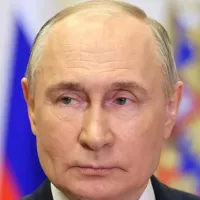
Vladimir Putin is a Russian politician the current President of...
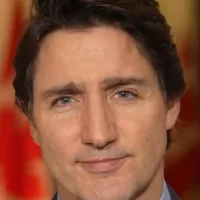
Justin Trudeau served as the rd Prime Minister of Canada...
Germany officially the Federal Republic of Germany is a Central...
France officially the French Republic is a country primarily in...
Russia officially the Russian Federation is a transcontinental country spanning...
Canada is a North American country spanning from the Atlantic...
Trending

26 days ago Jannik Sinner Forced to Retire in Shanghai Match Against Griekspoor Due to Cramps
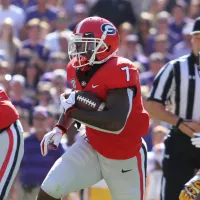
D'Andre Swift is an American professional football running back currently playing for the Chicago Bears Swift played college football at...

10 days ago Ben Shelton faces Kamil Majchrzak at ATP Basel after Rune's setback: Predictions.
53 minutes ago Robert Englund Receives Hollywood Walk of Fame Star: A Horror Icon Honored
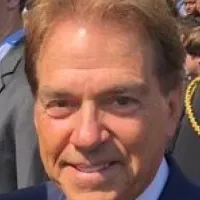
3 months ago Saban Return Rumors, Browns' QB Plans, and Sanders/Manning Impact Discussed.
Mali officially the Republic of Mali is a landlocked country in West Africa and the eighth-largest country in Africa It...
Popular
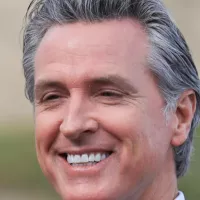
Gavin Newsom is an American politician and businessman currently serving...
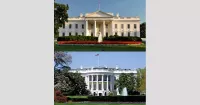
The White House located at Pennsylvania Avenue NW in Washington...
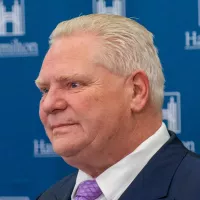
Doug Ford is a Canadian politician and businessman currently serving...

XXXTentacion born Jahseh Dwayne Ricardo Onfroy was a controversial yet...

Candace Owens is an American political commentator and author known...
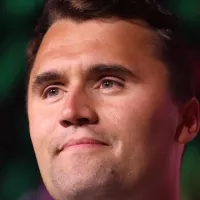
Charlie Kirk is an American right-wing political activist entrepreneur and...